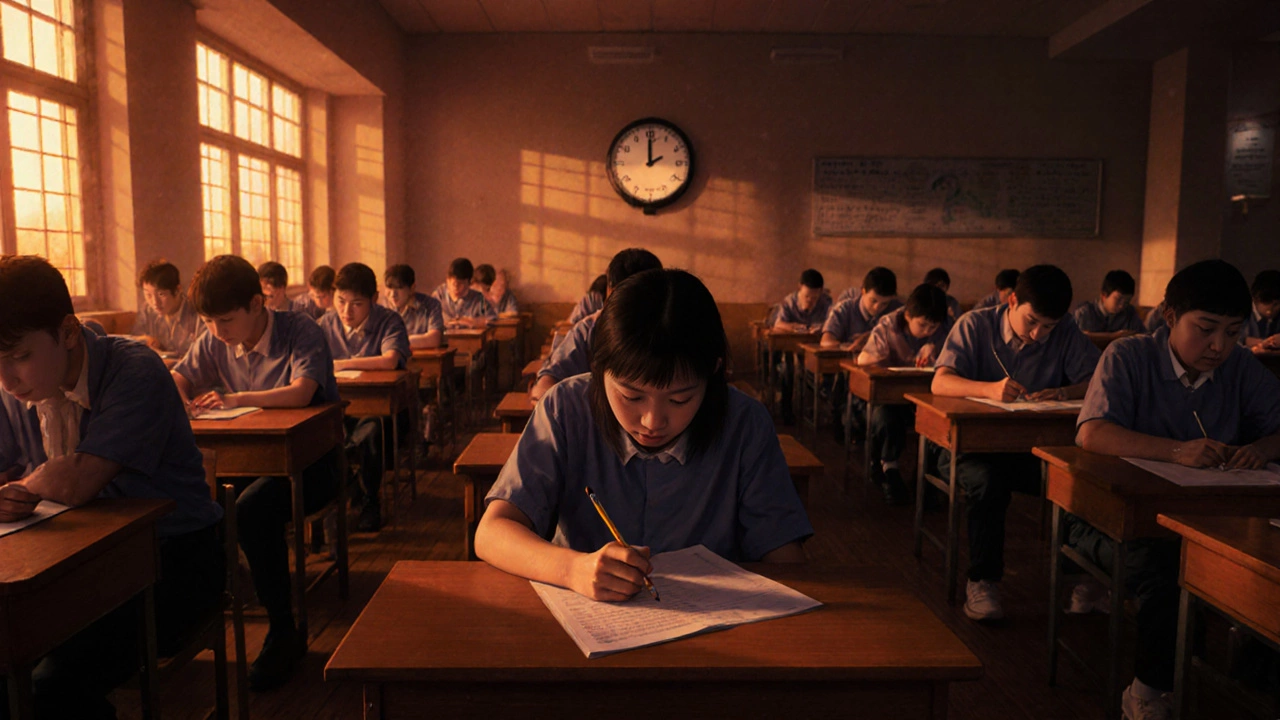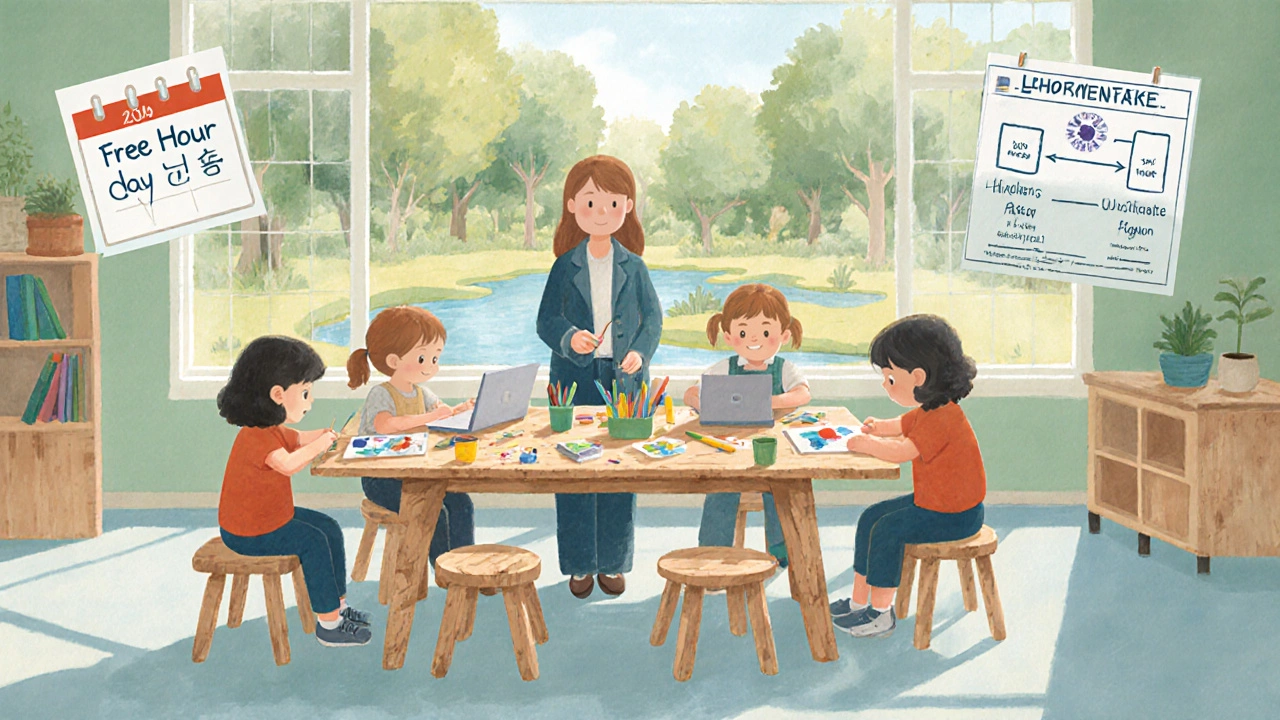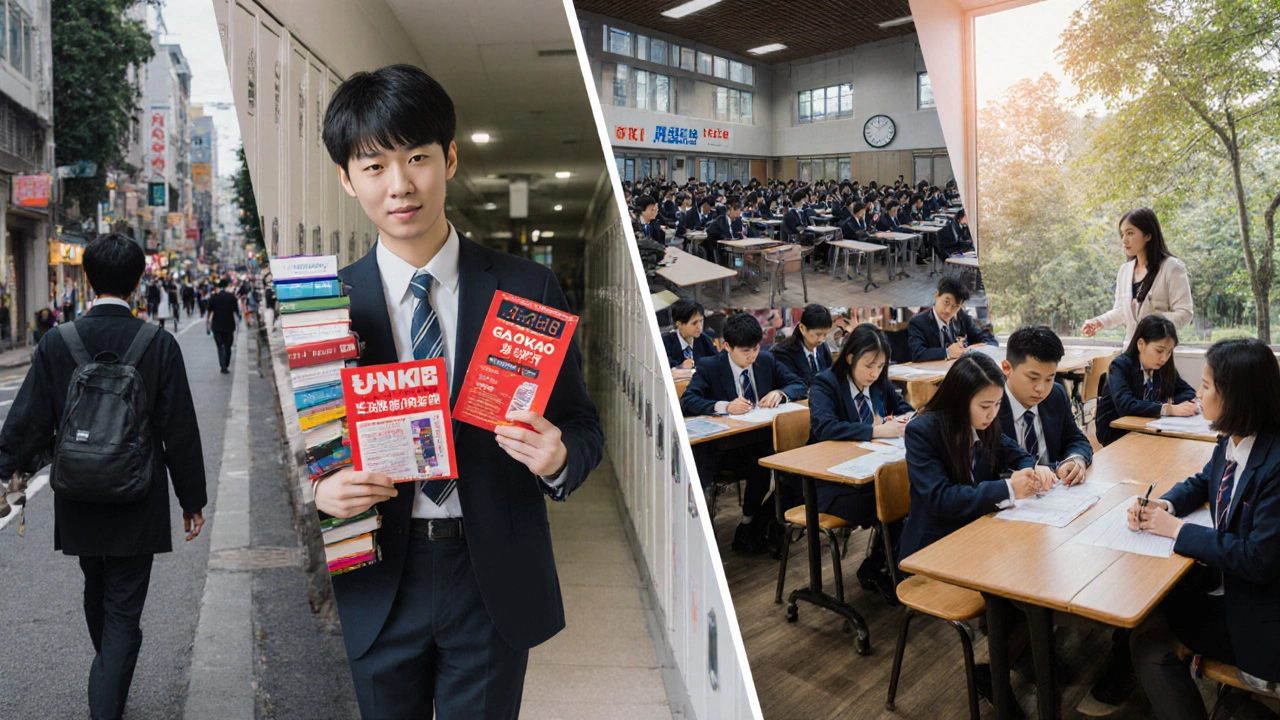Education System Suitability Quiz
Assess Your Education System Fit
Answer these 5 questions to determine if a high-pressure education system suits your needs.
Your Education System Fit Score
Key Findings
Recommended System
Consider countries like
Key Takeaways
- South Korea, Japan, China and Singapore regularly top lists for the most demanding school environments.
- Study hours, high‑stakes exam pressure, and student‑stress indices are the core metrics used to judge difficulty.
- While a tough system can boost academic outcomes, it often comes with burnout and limited creativity.
- Parents and students can use a simple checklist to decide if a high‑pressure system matches their goals.
- Policy makers worldwide look at the trade‑offs of these systems when designing reforms.
What Makes an Education System "Tough"?
Before naming a country, we need a working definition. A toughest education system is one where students face a combination of long study hours, frequent high‑stakes exams, and intense competition for limited university spots. The pressure is not just academic; it often spills into family expectations and societal status.
Experts typically evaluate three pillars:
- Time Investment - average weekly hours spent on school work, tutoring, and self‑study.
- Exam Rigor - difficulty of national college‑entrance exams and the number of exams that determine future pathways.
- Stress Impact - measured by student‑reported anxiety, dropout rates, and mental‑health statistics.
Data from the OECD, UNESCO and national ministries feed into these pillars, giving us a comparable score across borders.
How Researchers Score Difficulty
Below is a quick snapshot of the methodology used by organisations such as the OECD and the World Bank:
- Study Hours: Surveyed average of 20+ hours of homework per week for secondary students.
- Exam Stakes: Number of high‑pressure exams (e.g., end‑of‑year, college‑entrance) and the pass‑rate thresholds.
- Stress Index: Combination of self‑reported stress, suicide rates among teens, and counseling demand.
- PISA Scores: While high scores don’t mean a system is harsh, they often correlate with rigorous curricula.

Top Countries Ranked by Overall Toughness
| Country | Avg. Weekly Study Hours | Key Entrance Exam(s) | Stress Index (0‑10) | PISA Math Score |
|---|---|---|---|---|
| South Korea | 24 | Suneung (College Scholastic Ability Test) | 8.7 | 532 |
| Japan | 22 | National Center Test (now "Common Test") | 8.3 | 527 |
| China | 25 | Gaokao | 9.0 | 590 (Shanghai) |
| Singapore | 20 | GCE "A" Level | 7.8 | 569 |
| Finland | 12 | National Matriculation Exam (relatively low stakes) | 3.2 | 520 |
Why These Countries Stand Out
South Korea
South Korean students spend an average of 24 hours a week on homework and private tutoring (“hagwons”). The Suneung determines a student's university track, and a single score can decide whether a family moves to a top‑tier school. The pressure shows up in a stress index of 8.7, one of the highest among OECD members.
Japan
Japan’s “Common Test” replaced the older “Center Test” but still funnels students into a rigid university admission ladder. Cultural expectations of perfection, combined with 22 study hours per week, push the stress index to 8.3. Yet the system produces strong literacy and discipline.
China
The notorious Gaokao is a two‑day marathon that decides college entrance for over 10 million students each year. With 25 weekly study hours and a stress index of 9.0, the Gaokao is often cited as the benchmark for academic intensity worldwide.
Singapore
Singapore blends high expectations with a merit‑based “A” Level system. While study hours are a touch lower (20 per week), the curriculum’s depth and the competitive “top 10%” university pipeline keep the stress index near 8.
Finland - The Contrasting Model
Finland appears at the bottom of the toughness scale. With only 12 study hours weekly and a low‑stakes matriculation exam, the stress index sits at 3.2. Yet Finnish students still score well on PISA, proving that high pressure isn’t the only path to achievement.
Pros and Cons of a Tough System
- Pros
- Higher average test scores and strong university placement rates.
- Discipline and work ethic that translate into professional life.
- Clear national standards that reduce ambiguity about expectations.
- Cons
- Elevated anxiety, depression, and in extreme cases, teen suicide.
- Limited time for extracurriculars, creativity, and social development.
- Risk of burnout, leading to disengagement later in life.

Checklist: Is a High‑Pressure System Right for You?
Use this quick list when deciding whether to enroll in a school with a reputation for being tough.
- Do you thrive under clear deadlines and measurable goals?
- Can you access extra tutoring or study groups without financial strain?
- Are you prepared for intense competition for university spots?
- Do you have coping tools (e.g., counseling, sports) to manage stress?
- Is your family supportive of long study hours and occasional sacrifices?
If you answered “yes” to most, a rigorous system might accelerate your academic path. If not, consider alternatives that balance achievement with well‑being.
Future Trends: Is Toughness Changing?
Many of the top countries are now piloting reforms. South Korea introduced “free‑hour” days to reduce weekend tutoring overload. Japan is experimenting with “holistic assessment” pilots that weigh project work alongside exams. China’s Ministry of Education has lowered the Gaokao’s language component weight to encourage creativity. These moves suggest a gradual shift toward blending rigor with mental‑health safeguards.
Frequently Asked Questions
Which country’s education system is the hardest for high‑school students?
Based on study hours, exam pressure, and student‑stress indices, China’s Gaokao system ranks as the most demanding, closely followed by South Korea and Japan.
Do tougher education systems guarantee better university admission?
Not always. While high‑performing students often secure spots at elite universities, the intense pressure can also lead to burnout and lower long‑term satisfaction. Admissions also depend on extracurriculars, personal statements, and interview performance.
How does Finland achieve good PISA scores with a less stressful system?
Finland focuses on teacher autonomy, small class sizes, and learning through inquiry rather than rote memorization. This approach fosters deep understanding, which translates into strong performance despite fewer study hours.
What resources help students cope with high‑pressure exams?
Counseling services, mindfulness apps, peer study groups, and scheduled leisure activities are proven to reduce stress. Many schools now integrate mental‑health curricula alongside core subjects.
Are there any international rankings that list education system toughness?
The OECD’s “Education at a Glance” report, combined with UNESCO’s Global Education Monitoring data, provides the metrics (study hours, exam frequency, stress indicators) used to rank system rigidity.
